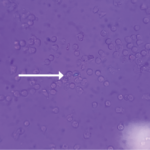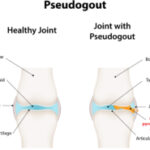The third major risk factor is trauma. “We think it’s probably limited to the meniscus of the knee, and it’s related to prior surgery or injury to the meniscus,” Dr. Rosenthal says. She has seen patients who have CPPD disease that impacts one knee meniscus only.
Genetic alterations linked to familial forms of CPPD make up the fourth main class of risk factors. Initial analyses suggested the associated genetic mutations appeared in two clusters on Chromosomes 5 and 8. One of the best known mutations, in the ANKH gene on Chromosome 5, has been linked to abnormal regulation of pyrophosphate levels and, by extension, bone formation and metabolism.5
Despite the many unanswered questions, Dr. Rosenthal has been encouraged by recent advances in classifying, diagnosing and identifying potential therapeutic targets for CPPD.
“I think we’re really having a moment. Understanding the genetic forms of this disease and some of the correlations with the metabolic diseases is painting a picture of the pathogenesis that may get us closer to really treating the root cause of the disease, which is the development of these crystals,” she says. “I am very optimistic about the future of CPPD, really for the first time in my career. It’s very exciting times.”
Bryn Nelson, PhD, is a medical journalist based in Seattle.
References
- Kohn NN, Hughes RE, McCarthy DJ Jr., Faires JS. The significance of calcium phosphate crystals in the synovial fluid of arthritic patients: The ‘pseudogout syndrome.’ II. Identification of crystals. Ann Intern Med. 1962 May;56:738–745.
- Abhishek A, Tedeschi SK, Pascart T, et al. The 2023 American College of Rheumatology/ European Alliance of Associations for Rheumatology classification criteria for calcium pyrophosphate deposition (CPPD) disease. Arthritis Rheumatol. 2023 Oct;75(10):1703–1713.
- Ellman MH, Levin B. Chondrocalcinosis in elderly persons. Arthritis Rheum. 1975 Jan–Feb;18(1):43–47.
- Cowley S, McCarthy G. Diagnosis and treatment of calcium pyrophosphate deposition (CPPD) disease: A review. Open Access Rheumatol. 2023 Mar 22;15:33–41.
- Williams CJ, Rosenthal AK. Pathogenesis of calcium pyrophosphate deposition disease. Best Pract Res Clin Rheumatol. 2021 Dec;35(4):101718.


